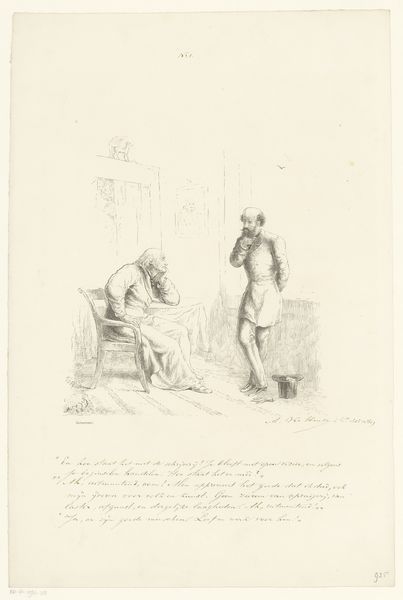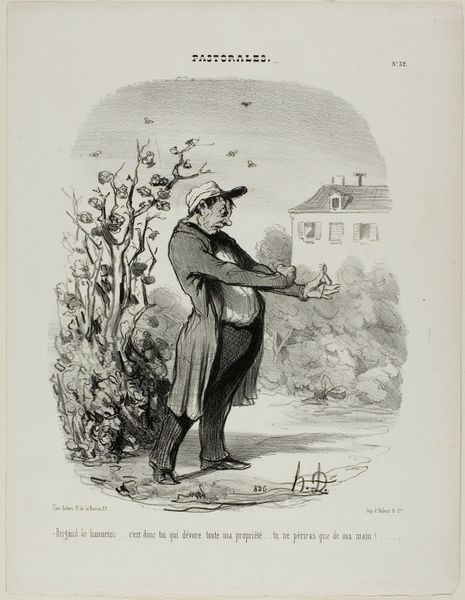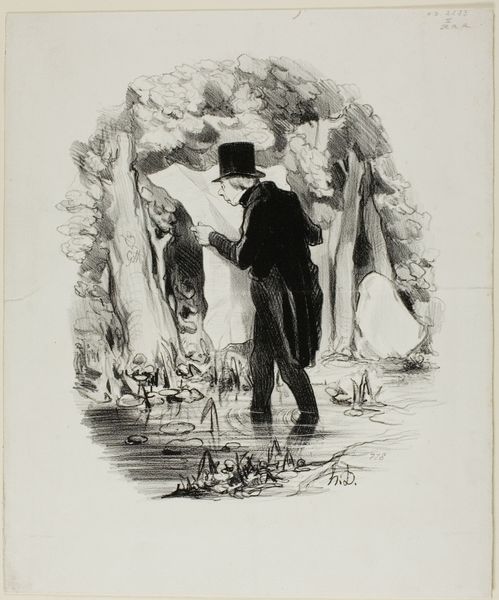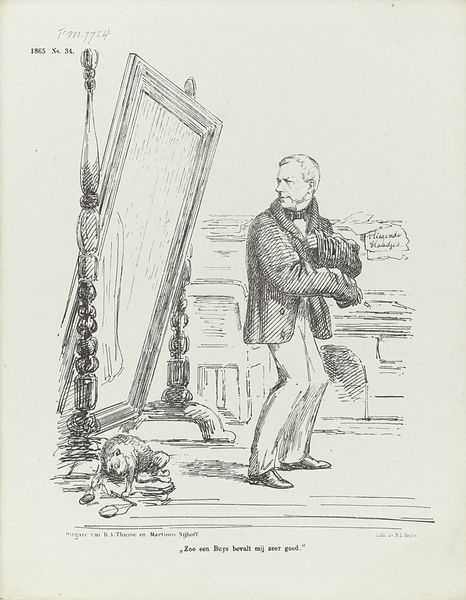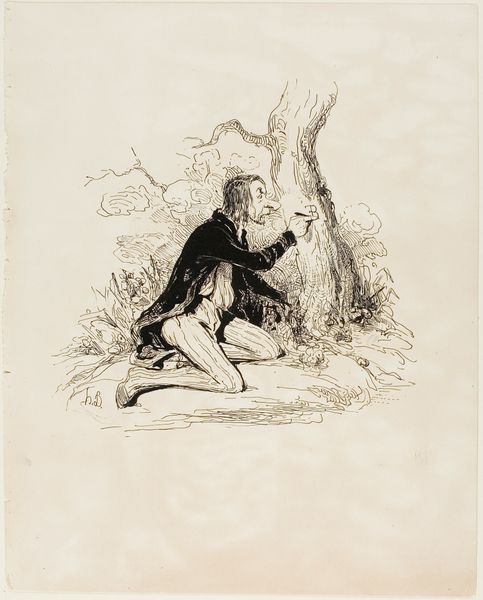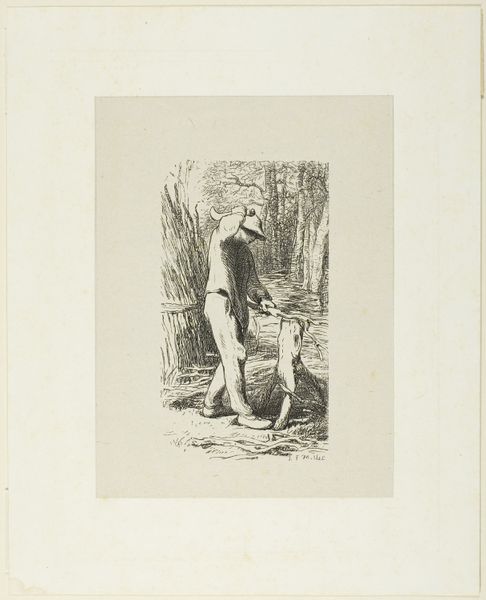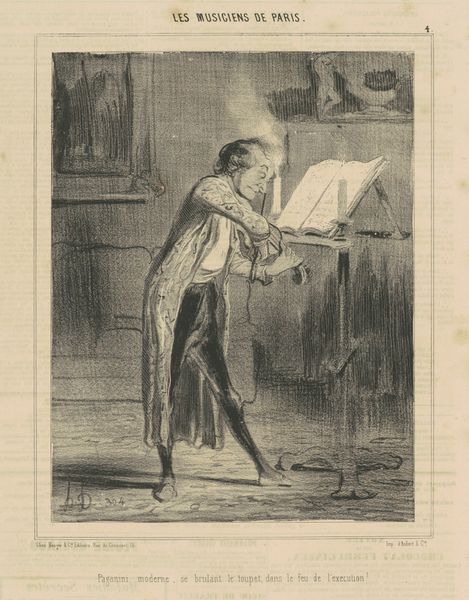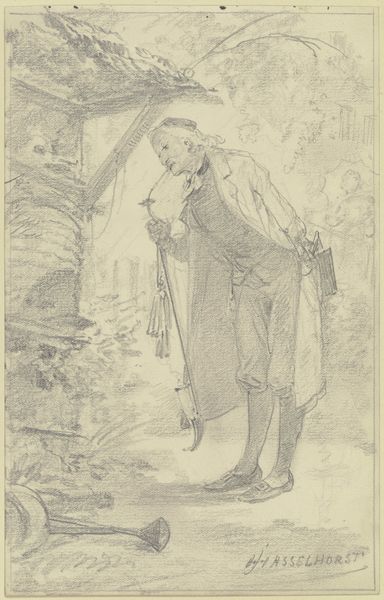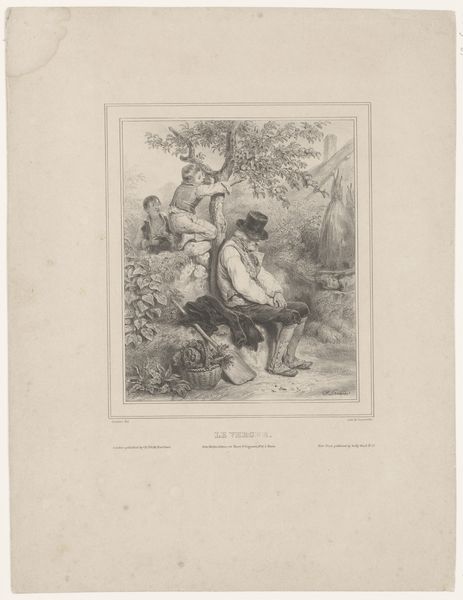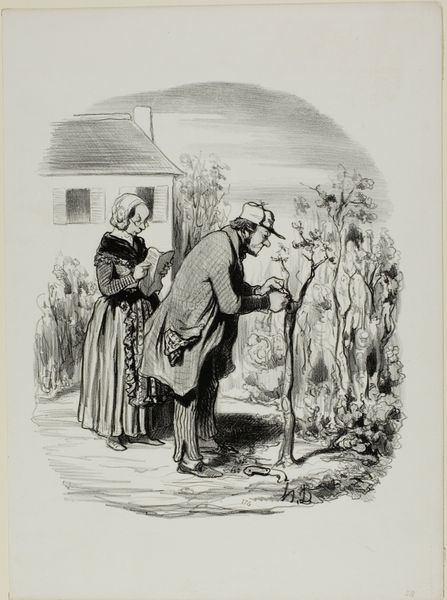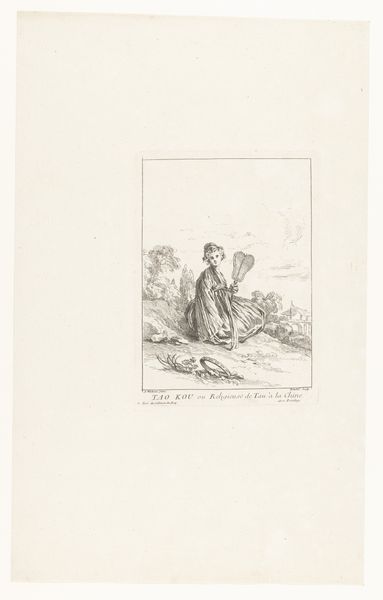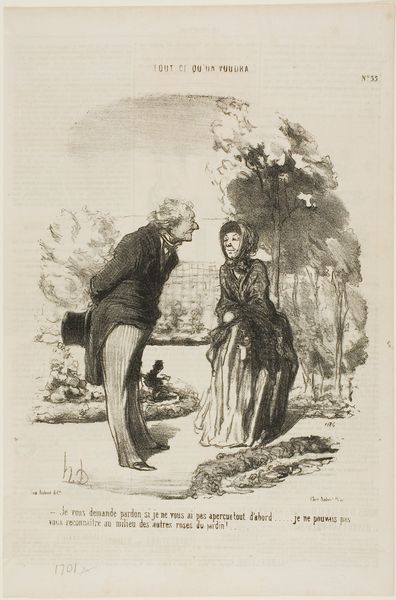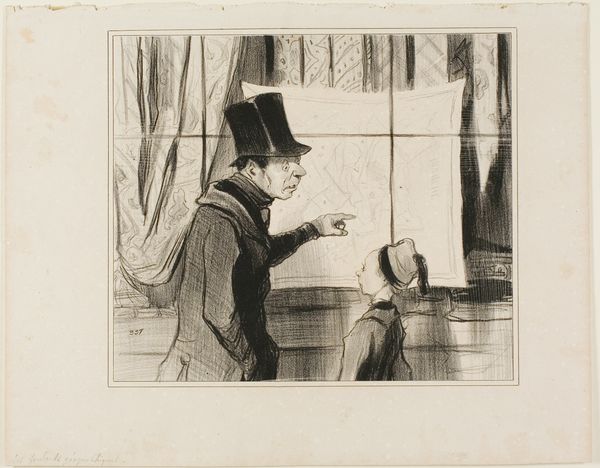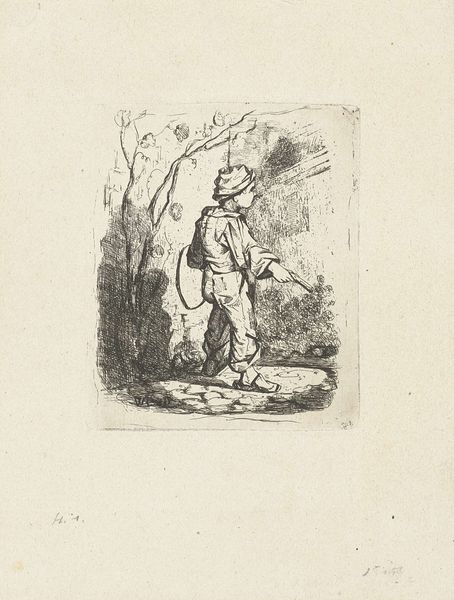
“- Dire pourtant que mes dahlias continuent encore cette année à être du ponceau le plus vif . . . . malgré tous mes soins, je ne pourrai donc jamais parvenir à leur donner la nuance Boue de Paris !...,” plate 6 from Tout Ce Qu'on Voudra 1847
0:00
0:00
drawing, lithograph, print, paper
#
drawing
#
lithograph
# print
#
caricature
#
paper
#
romanticism
#
genre-painting
Dimensions: 255 × 215 mm (image); 330 × 250 mm (sheet)
Copyright: Public Domain
Here we see a lithograph by Honoré Daumier, made in the 19th century, a period of rapid industrialization and social change in Paris. The central figure, arms crossed in dejection, stands before a vibrant dahlia bush. The dahlia, though beautiful, represents a thwarted desire for something more subdued, the coveted 'Boue de Paris' hue. This pursuit of a specific color transcends mere aesthetics, echoing humanity's timeless quest for control over nature and the self. Consider how, across cultures, flowers have been used to symbolize transient beauty. The crossed arms, a gesture of resignation or defiance, recur throughout art history, from classical sculptures to Renaissance portraits, each reflecting a unique emotional state. The very act of cultivation—of imposing one's will on the natural world—speaks to a deep-seated human drive, a psychological dance between control and acceptance. Thus, this seemingly simple scene encapsulates broader themes of aspiration, disappointment, and the ever-evolving relationship between humanity and nature.
Comments
No comments
Be the first to comment and join the conversation on the ultimate creative platform.
